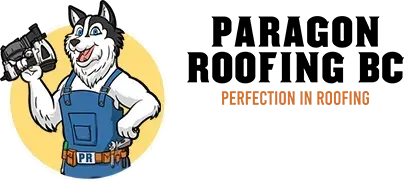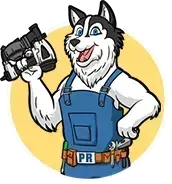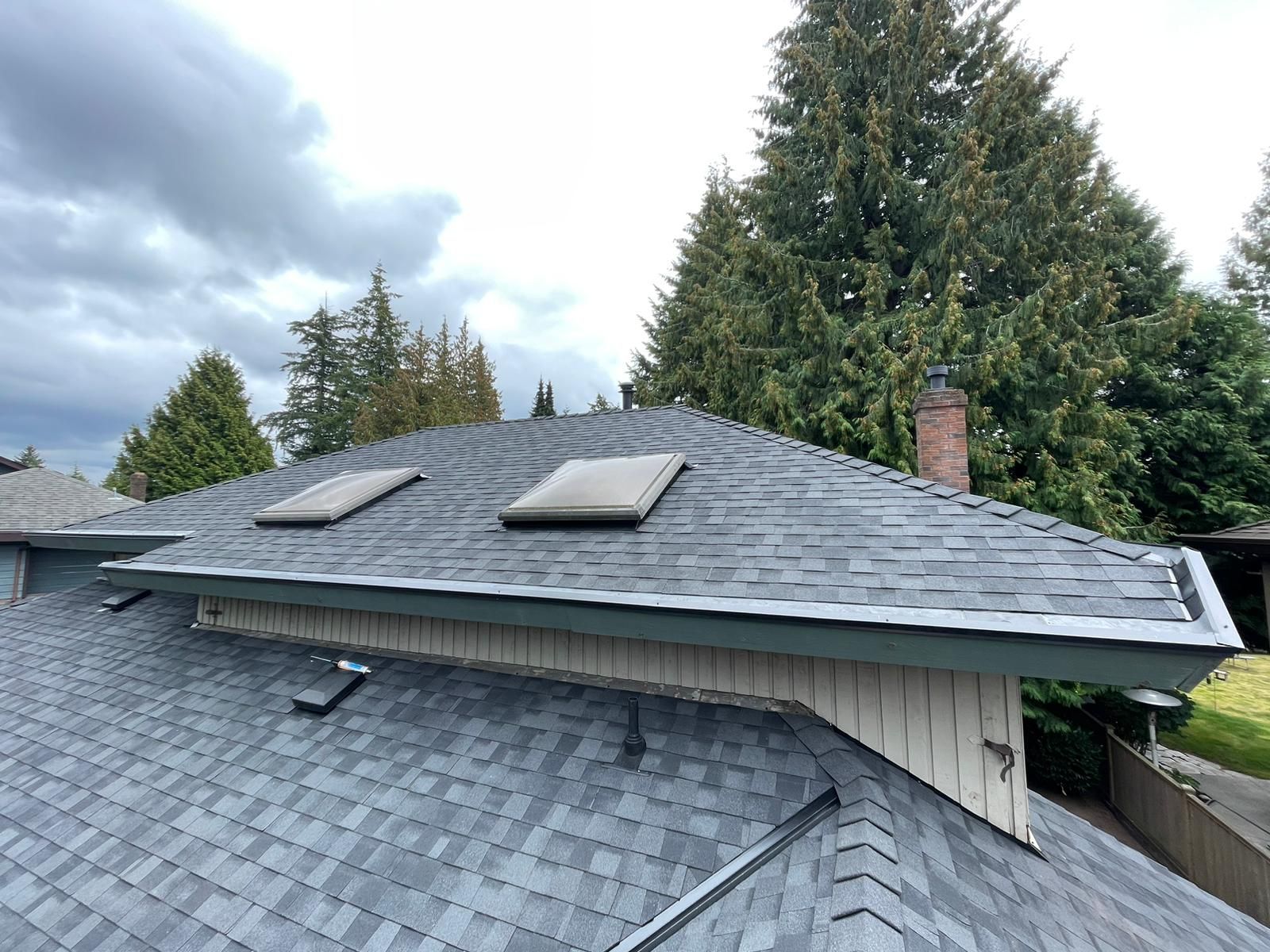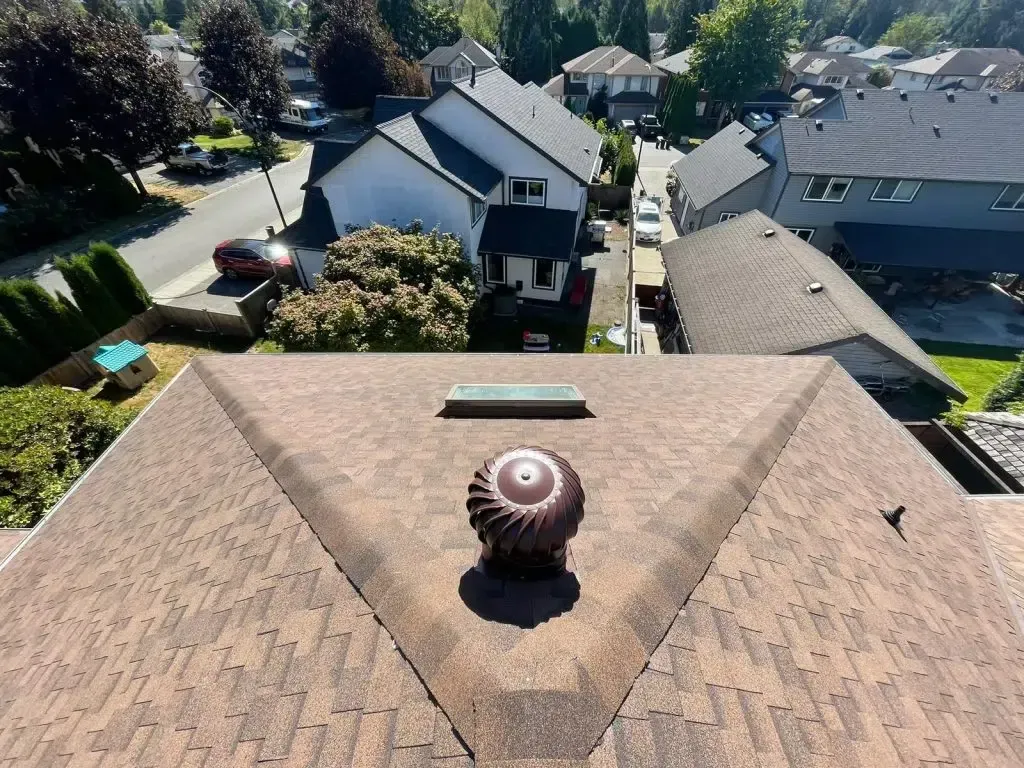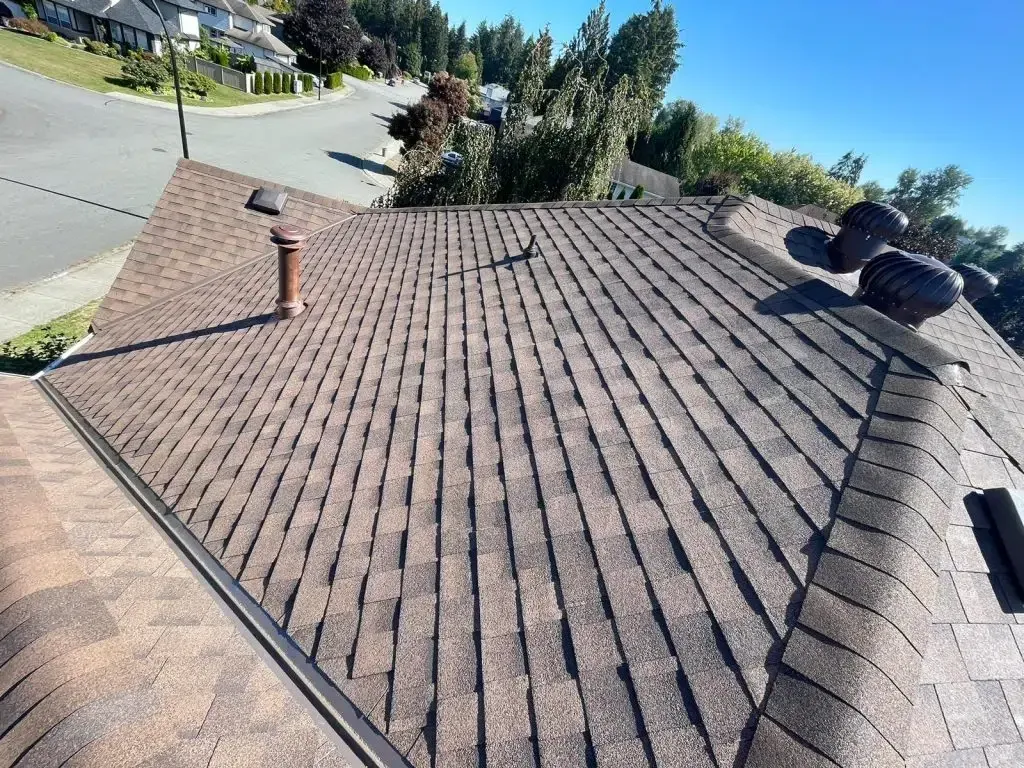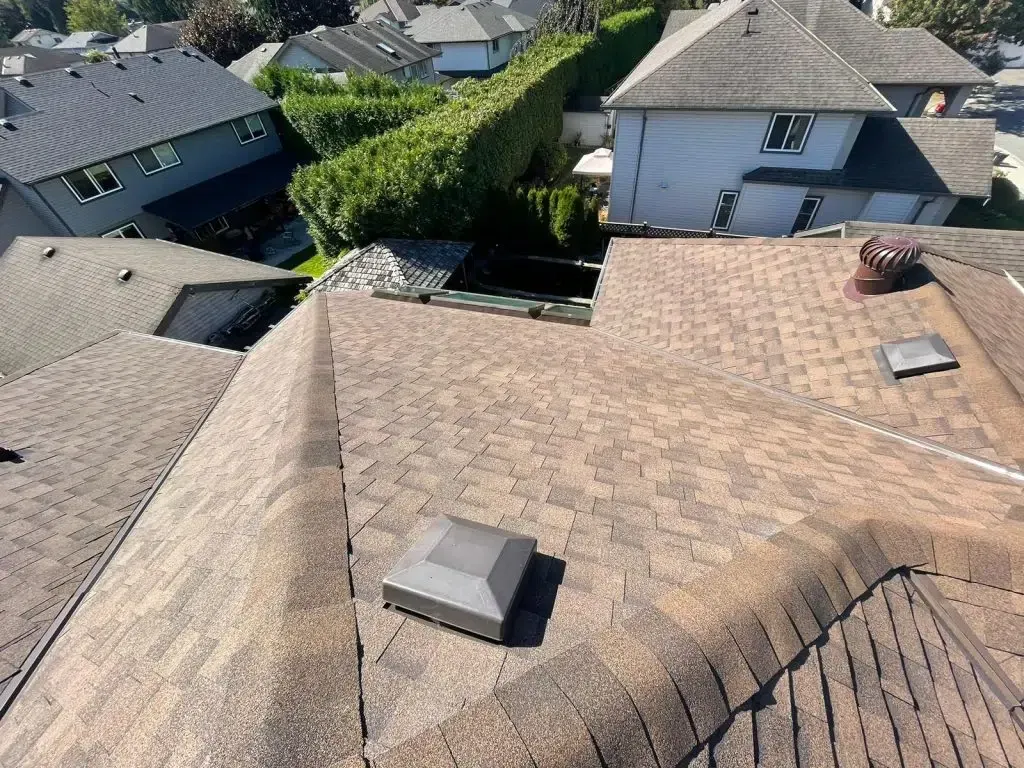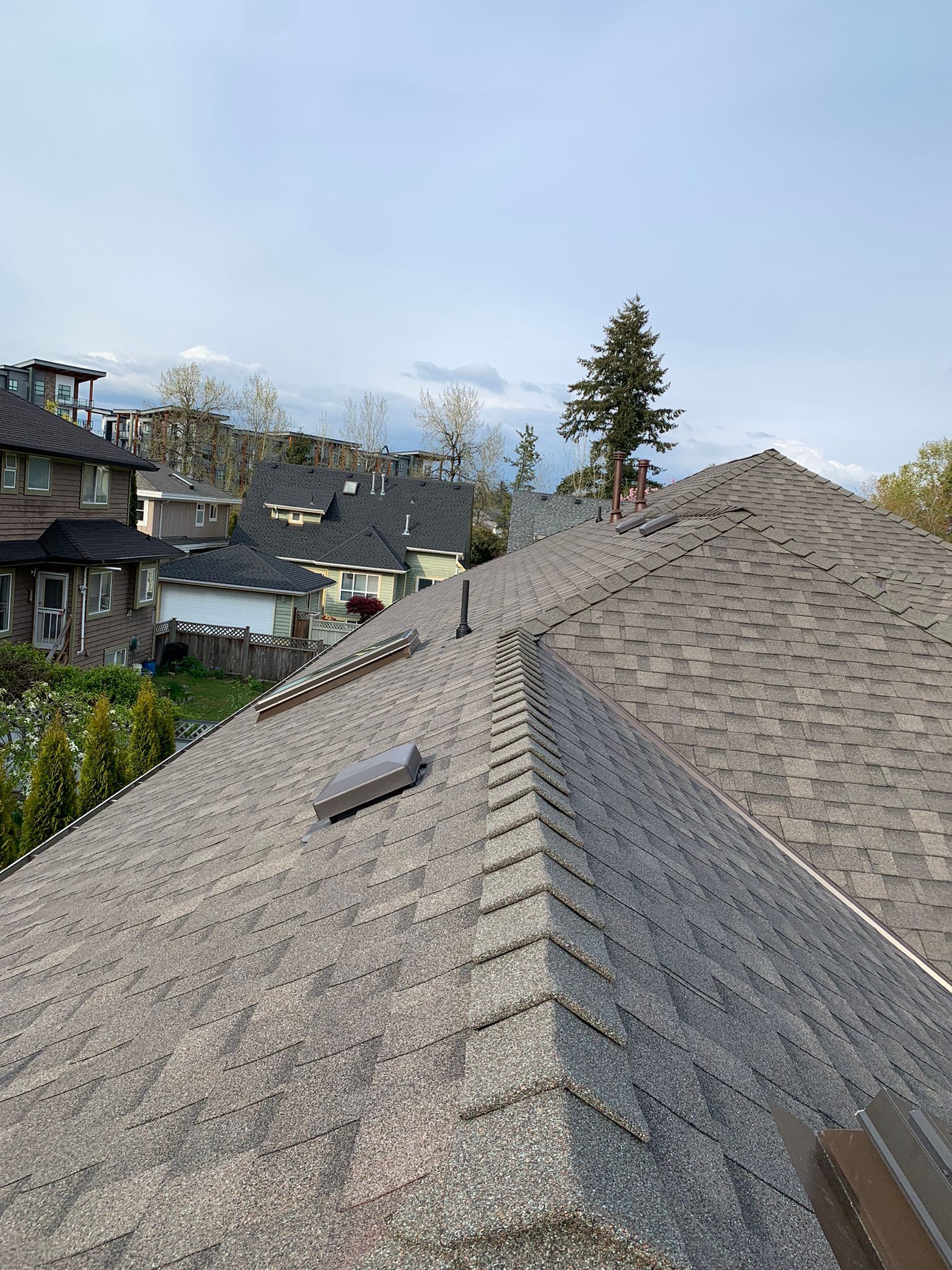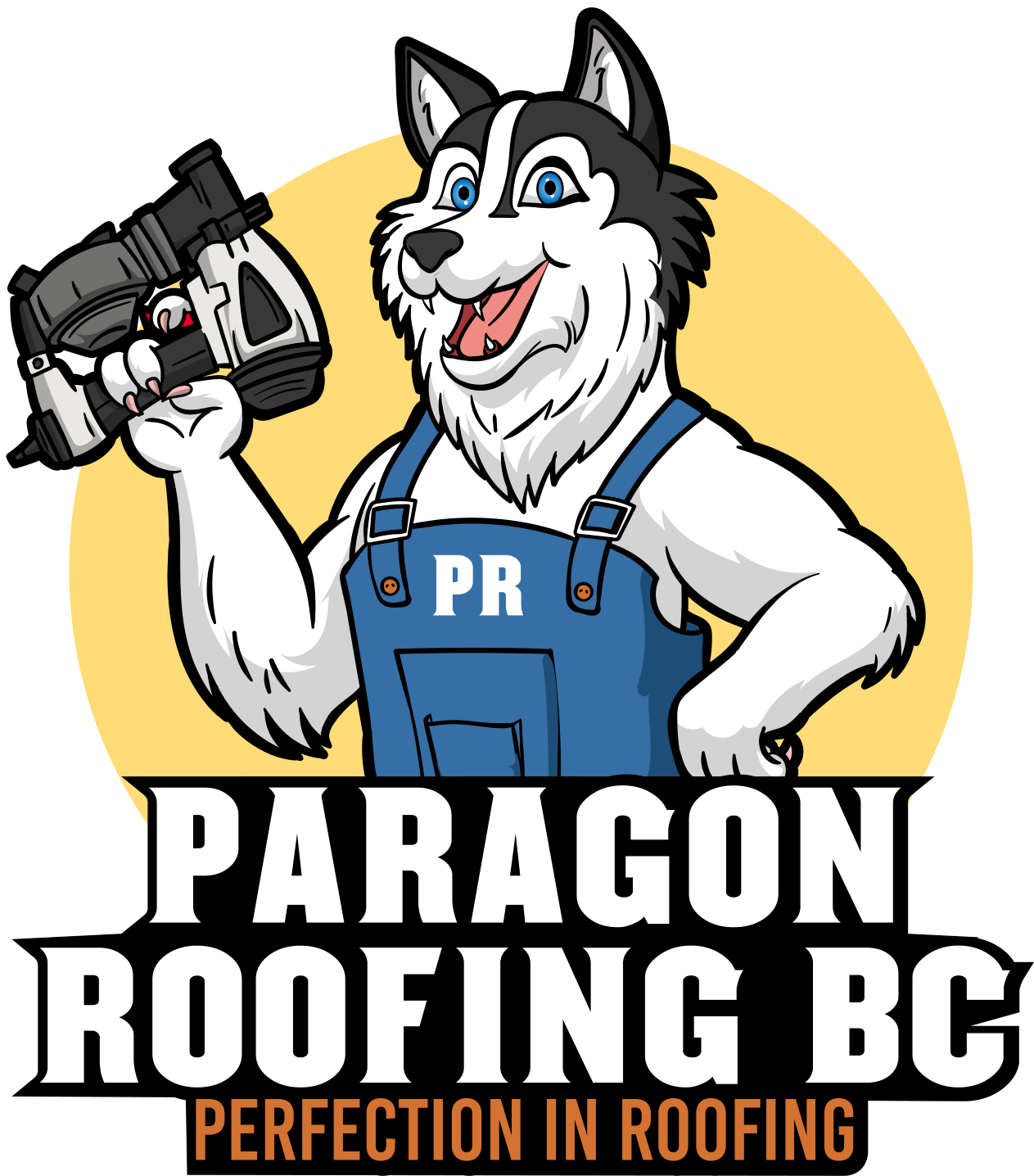Structural & Code Considerations for Cedar Conversions
When you convert a cedar roof in Vancouver, you’re not just changing the “top layer.” You’re changing how the entire roof assembly behaves structurally, how it handles moisture, and how long it will last in our soaked-for-months climate. A proper cedar conversion respects structure, code, and physics—not just aesthetics.
Why You Can’t Just Shingle Over Old Cedar
This is the shortcut that ruins roofs.
Old cedar shakes and shingles are uneven, soft, and full of air gaps. When you try to nail asphalt, synthetic, or metal directly over them, you create a stack of problems:
- The surface is bumpy and inconsistent, so shingles don’t lie flat. That means more exposed nail heads, lifted tabs, and spots where water can sneak in.
- Fasteners don’t bite properly. Nails driven through old, brittle cedar can sit proud, back out, or miss solid wood entirely. Over time, that turns into loose shingles and leaks.
- The whole assembly becomes too thick and “mushy.” Instead of a solid, continuous deck, you’re building over a spongy layer that moves differently in heat and moisture.
On top of that, building codes and manufacturers expect modern roofing systems to be installed over solid sheathing, not skip-sheathing and old shakes. Ignoring that can void product warranties and cause issues if there’s ever an insurance claim or an inspection for resale. It may look fine from the street for a few years, but under the surface, you’re gambling.
Plywood Thickness & Fastening Requirements
Homeowners don’t need to memorize code clauses, but you do need to understand the basics of why new plywood is such a big deal in a cedar conversion.
When we strip cedar and install new sheathing, we’re basically giving your roof a new backbone. Using 3/8" or 1/2" plywood, correctly installed, turns a loose board deck into a strong, uniform surface:
- Sheets are tied together and fastened into rafters in a consistent pattern so the deck acts as a single plane, not a bunch of disconnected boards.
- Proper thickness helps control flex between rafters. That means fewer cracked shingles, fewer popped nails, and a more solid feel underfoot.
- A well-fastened deck also improves how the house handles wind loads. The roof becomes a braced surface, not just something “resting” on top.
In plain language: good plywood and correct fastening make everything above it work better—underlayment, shingles, synthetic shake, metal, all of it. Skimping here is like putting a luxury floor on a rotten subfloor; it might look good for a moment, but it won’t stay that way.
Ventilation & Condensation Control in Vancouver’s Climate
Now layer our climate on top of all this: long, wet winters, cool nights, and houses that constantly breathe warm, moist indoor air upward. If the roof assembly can’t relieve that moisture, it condenses in the attic or under the deck. That’s where ventilation becomes non-negotiable.
There are two big ideas:
- Vented roof assemblies – cold attic, warm house. You have intake at the soffits and exhaust at the ridge or high vents. Air moves through, carrying moisture away and keeping the deck closer to outdoor temperature.
- Closed (unvented) assemblies – typically only done with specific insulation strategies and detailed design. Most older Vancouver homes weren’t built for this and shouldn’t be converted casually into one.
Poor ventilation leads to:
- Condensation on the underside of the plywood
- Damp insulation that loses effectiveness
- Mold and mildew on rafters and sheathing
- Shortened roof life because the deck spends too much time wet from the inside
When we do a cedar conversion, we’re not just laying new roofing—we’re making sure intake and exhaust are balanced, baffles are in place where needed, and the roof can actually breathe in our coastal environment.
Cedar Roof Conversion vs Installing New Cedar Again
Once you accept that the old cedar has to go, there’s a fork in the road: do you put new cedar back on, or do you convert to asphalt, synthetic, or metal? The right answer isn’t the same for everyone, but it’s never just about nostalgia. It’s cost, maintenance, aesthetics, and how future buyers (and insurers) will see your home.
Cost Comparison – New Cedar vs Conversion to Asphalt or Synthetic
New cedar is no longer the “default” it once was. High-quality cedar is more expensive, harder to source, and often requires thicker, better-grade product to survive in today’s climate and air quality. Factor in:
- The cost of the cedar itself
- Skilled labour to install it properly (cedar is slower and more detailed work)
- Ongoing maintenance over time
By contrast, a cedar conversion to architectural asphalt often lands at a lower or similar upfront cost —even when you include new plywood, upgraded underlayment, and proper ventilation work.
Synthetic shake or slate systems usually cost more than asphalt, but they often sit in the same range or slightly above quality cedar—except they’re designed to hold their look and shape for a much longer period, with far less maintenance. So the comparison isn’t just “price today,” it’s what you’re buying over 20–30 years.
Maintenance Requirements Over 10–20 Years
Cedar looks romantic when it’s new. Twenty years later, the romance is moss, needles, UV splitting, and endless patch repairs. In Vancouver especially, cedar:
- Absorbs and holds moisture
- Becomes a habitat for moss and algae
- Needs periodic cleaning and sometimes chemical treatments
- Often requires selective shake replacement long before the whole roof is “done”
Asphalt and synthetic systems are not magic, but they’re far more predictable. With regular roof maintenance and inspections, you’re mostly dealing with:
- Occasional shingle replacements after storms
- Minor flashing corrections
- Moss management that’s less intense than on organic cedar
Synthetic shakes/slate and metal take the maintenance conversation even further: minimal interventions, longer periods between work, and less worry about individual pieces rotting or splitting. Over 10–20 years, the time, energy, and money you put into cedar can easily exceed what you’d spend caring for a converted roof system.
Aesthetic Considerations – Keeping the Look vs Updating
This is where the heart sometimes argues with the head. Some homes genuinely wear cedar the way they were designed to—West Coast post-and-beam, older character homes, or certain North Shore properties where the roof is part of the architectural identity.
If you want to keep that layered, textured shake look, you now have options beyond natural wood:
- Synthetic shakes that preserve the profile and depth without the rapid aging
- Colour-stable blends that still feel organic but don’t go blotchy and patchy in five years
On more typical suburban homes—1980s and 90s builds with vinyl or stucco—architectural asphalt often looks cleaner, more contemporary, and more in line with what’s happening on the rest of the street. Metal, on the right house, can push things into a modern, design-forward territory.
The decision is less about “cedar vs not cedar” and more about whether the roof is a quiet backdrop or a key design feature.
Resale Value & Buyer Expectations in Vancouver
Buyers are more informed now than they’ve ever been. Their inspectors are, too. When someone walks into an open house and sees an old cedar roof, they don’t just see charm—they see future cost, maintenance, insurance questions, and negotiation leverage.
A converted roof—especially one with:
- A new plywood deck
- Modern underlayment and ice & water
- Updated ventilation
- A widely understood system like architectural asphalt, synthetic, or metal
—signals “this big-ticket item has been dealt with.” That can:
- Reduce the chance of last-minute price drops over “roof concerns”
- Make financing and insurance smoother
- Push your home higher up the list for buyers who don’t want immediate projects
In some neighbourhoods, staying with cedar might still appeal to a niche buyer who loves that look, but the broader market is shifting toward low-maintenance, modern systems. A professionally executed cedar roof conversion in Vancouver is often seen as a smart long-term upgrade rather than a downgrade from “premium cedar,” especially when it’s done as a full system rebuild rather than a cosmetic swap. You’re not just putting on a new roof—you’re sending a clear message about how the house has been cared for.
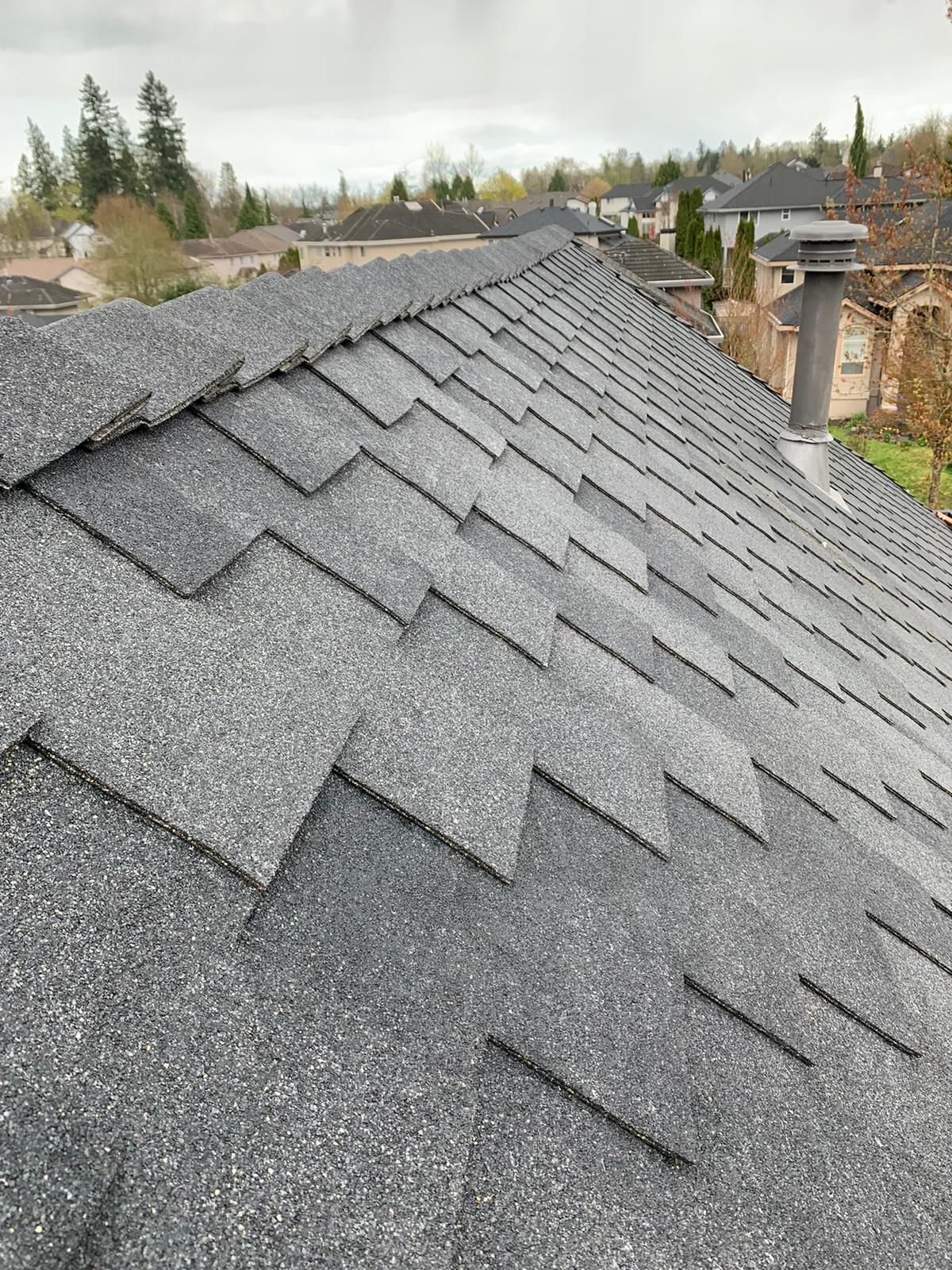
How Much Does a Cedar Roof Conversion Cost in Vancouver?
Pricing a cedar roof conversion in Vancouver is a bit like pricing a full exterior renovation: the numbers move with complexity, access, and what we find once the old shakes are off. You’re not just paying for “new shingles” — you’re paying to rebuild the roof structure into a modern, fully-sheathed system that works properly in our coastal climate.
Typical Price Ranges for Cedar to Asphalt Conversions
Cedar-to-asphalt conversions are usually the most budget-friendly option, while still feeling like a major upgrade. You get a new plywood deck, modern underlayment, and a full architectural shingle system that’s easy to maintain and familiar to inspectors, insurers, and buyers.
Most Vancouver homes fall into a broad band:
- Smaller bungalows and simpler rooflines at the lower end of the range
- Larger, multi-gable or split-level homes sitting mid-range
- Big custom homes with lots of hips, valleys, and details near the upper end
Because every cedar conversion involves tearing down to the skip-sheathing and building up from scratch, the cost is always higher than a basic “shingle-over-shingle” job—but you’re getting a completely reset roof assembly, not a cosmetic band-aid. For most homeowners, this becomes the “sweet spot” between upfront cost and long-term reliability.
Price Ranges for Cedar to Synthetic or Metal Conversions
If you’re converting cedar to synthetic shake or slate(Enviroshake, DaVinci, Brava-style systems) or to a metal roof, you’re stepping into the premium bracket. The structure of the job is similar—tear-off, new plywood, underlayment, ventilation—but the material investment and detailing time are higher.
Roughly speaking:
- Synthetic shake/slate conversions typically sit above asphalt but below some high-end metal systems, especially when you factor in long lifespan and curb appeal.
- Metal conversions (especially standing seam) often live at or near the top range for residential roofing, because they’re both labour-intensive and material-heavy.
These systems make the most sense when you plan to stay long-term, want a statement look, or you’re in a neighbourhood where higher-end roofs are the norm and you don’t want your home to feel like the “weak link” on the street.
Factors That Affect Total Cost
Two houses can have the same square footage and wildly different roof costs. The difference is never just the number—it’s the story behind the roof:
- Roof size & complexity
Simple rectangles with one or two slopes sit at the lower end. Multiple gables, dormers, hips, and valleys add time, detail work, and waste. - Amount of rotten wood replacement
On some cedar roofs, the skip-sheathing and rafters are in great shape. On others, we open things up and find rot, water staining, or structural issues that need fixing before we can move forward. More repairs = more labour and material. - Flashings, skylights, chimneys & valleys
Every penetration on the roof is a detail that needs careful treatment. Old brick chimneys, multiple skylights, awkward wall junctions, and complex valleys all add to the scope. - Access & height
Tight driveways, steep slopes, limited staging areas, and three-story elevations affect how we load materials, move crews, and manage safety.
All of this is why an on-site assessment is so important. A cedar conversion quote that ignores these factors is guesswork, and guesswork always ends up expensive for someone.
Why Conversions Are an Investment, Not Just a Cost
A proper cedar roof conversion in Vancouver isn’t just about getting through one more rainy season. It’s about resetting your roof so it behaves like a modern system: solid deck, proper underlayment, better ventilation, and a durable finish layer.
The “hidden” return shows up in a few ways:
- Reduced maintenance – No more constant cedar patching, aggressive moss battles, or worrying about the next storm pulling up soft, aging shakes.
- Fewer leaks & repairs – A new deck, new flashing, and a well-ventilated assembly drastically reduce the odds of surprise water stains and emergency buckets in the living room.
- Better long-term performance – Asphalt, synthetic, and metal systems are more predictable over time, especially when they’re installed over fresh plywood and paired with proper ventilation.
- Improved resale value – Buyers and inspectors love seeing a recently converted roof with documentation. It takes a major “risk item” off their list.
Done properly, a cedar conversion is a once-in-decades decision that can stabilize your home’s envelope and make ownership calmer and more predictable. If you want to see the full, step-by-step breakdown of what that looks like, you can dive deeper into our dedicated cedar roof conversion in Vancouver overview.
Common Questions About Cedar Roof Conversions in Vancouver
Homeowners usually ask the same core questions once they start seriously considering a conversion. That’s a good sign—you’re thinking about disruption, safety, comfort, and long-term payoff, not just shingle colours.
How long does a cedar roof conversion take?
Most single-family homes land in the range of several working days to a couple of weeks, depending on size, complexity, and weather. The process includes tear-off, sheathing, underlayment, ventilation upgrades, and installation of the new roofing system.
A simple, modest-sized roof with good access and straightforward detailing moves faster. Large custom homes with extensive valleys, skylights, or complex layouts take longer because every detail needs to be opened, rebuilt, and properly sealed. Weather also matters; in Vancouver, we build the job around keeping your home dry even if the sky doesn’t cooperate.
Will converting my cedar roof damage my home or landscaping?
A good crew treats your property like it has to look just as good (or better) when they leave as when they arrived. That means:
- Using tarps and plywood to protect gardens, walkways, and patios
- Controlling where debris falls during tear-off
- Cleaning up daily, not only at the very end
The conversion itself is a heavy-duty construction process—old cedar is messy—but with the right prep and discipline, you shouldn’t be left with crushed plants and nails in the lawn. A proper magnet sweep and walk-around at the end are non-negotiable.
Can I stay in my home during the project?
For almost every cedar conversion, yes, you can stay home. You’ll hear noise—tear-off, compressors, nailers, occasional hammering—but the work stays outside and on the roof.
Most homeowners continue working from home, caring for kids, or living normally with a bit more daytime background noise. If you’re especially sensitive to noise, you might plan a few key outings or work days off-site, but there’s no requirement to move out.
Is converting from cedar to asphalt/synthetic/metal noisy?
Short answer: yes, at times it is. You’ll hear:
- The sound of old cedar and lath coming off the roof
- Footsteps overhead while crews move materials
- Nail guns and saws during sheathing and roofing installation
The loudest period is usually tear-off and re-sheeting, when old material is being removed and new plywood is going down. After that, the rhythm settles into a more steady, predictable construction noise. It’s concentrated in working hours; evenings and nights are quiet.
Does a cedar conversion require permits or engineering?
In many cases, cedar conversions fall under typical roofing and sheathing work, but certain situations can trigger permit or engineering requirements, such as:
- Structural concerns discovered during inspection (sagging, undersized rafters, visible deflection)
- Significant changes to the roof structure or load path
- Local municipality rules around major exterior renovations
A responsible contractor will flag anything that looks like it needs an engineer’s eyes and help you understand whether permits are required in your specific jurisdiction. The goal isn’t to make things complicated; it’s to make sure the roof you’re investing in is safe, legal, and properly documented.
How long will my new roof last after conversion?
Once your cedar has been converted to a modern system and installed correctly, roof life is no longer limited by the old shakes—it’s defined by the new roofing material and the quality of the build.
- Architectural asphalt roofs in Vancouver commonly offer a multi-decade service life when properly ventilated and maintained.
- Synthetic shake/slate systems are designed for even longer performance, with stronger resistance to moisture, UV, and warping.
- Metal roofing often provides the longest horizon, with high durability and excellent performance in rain and snow.
Pair that with a solid deck, upgraded underlayment, and correct ventilation, and you’re no longer wondering if the roof will limp through another winter. You’re planning in decades, not in “one more season” guesses.
